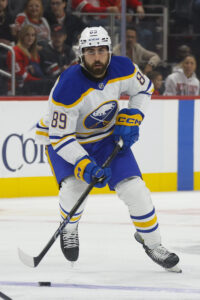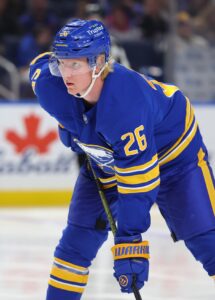A veteran blueliner has found a place to play this season. Djurgarden of the SHL announced that they’ve signed defenseman Oliver Kylington to a one-year contract.
The 28-year-old was a second-round pick by Calgary back in 2015 and showed some flashes of upside over his six-year stint with the team. It looked like he had turned a corner in 2021-22 when he collected nine goals and 22 assists in 73 games, putting him in a spot to be a potential top-four piece for them. However, he was away from the team on a leave of absence for the next year and a half and played a limited role after that, resulting in the Flames going in a different direction last summer when he became a free agent.
Kylington wasn’t able to get the types of offers he was initially seeking in free agency, resulting in him waiting more than a month before he signed a one-year, $1.05MM contract with Colorado. But playing time was hard to come by as he suited up in just 13 games with the Avs before being moved to the Islanders near the trade deadline; New York flipped him to Anaheim the next day. Kylington played in just six games following the swap and then hit the open market this summer.
Kylington inked a PTO agreement with Carolina in late August with the hopes of landing a roster spot with them. However, after three preseason games, he was cut fairly early, sending him back to free agency. Clearly, no other NHL offers materialized so he has decided to head home where he’ll play a regular role in the hopes of boosting his stock next summer.
With 220 career NHL appearances under his belt, it’s quite possible that Kylington finds his way back to North America at some point, especially if he goes and plays an impactful role with Djurgarden. But for now, his time at the top level has come to an end.

